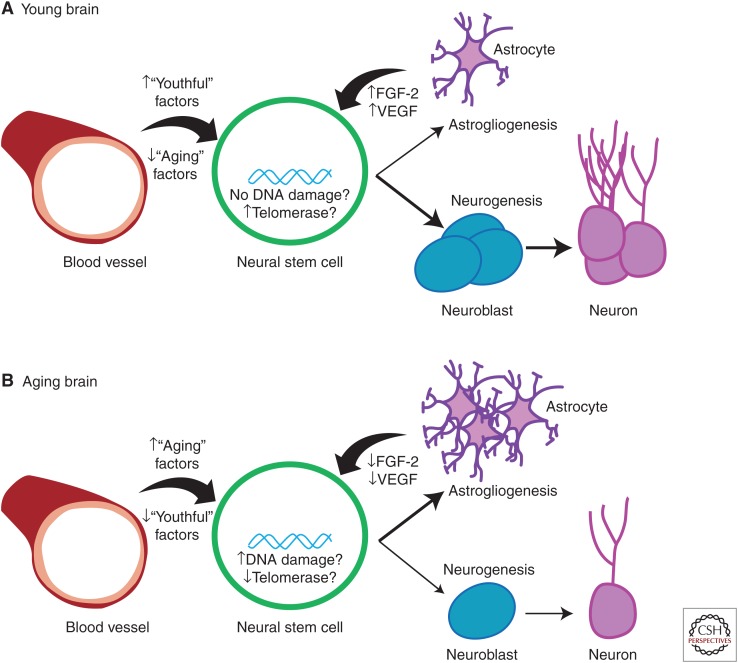Figure 1.
Hypothesized aging effects on neural stem cells. (A) In the young brain, neural stem cells (green) have low amounts of DNA damage but high amounts of telomerase activity. Astrocytes (purple) provide trophic support and circulating “youthful” factors from the blood (red) support a neurogenic environment, in which neural stem cells divide into neuroblasts (blue), which mature into neurons (magenta). (B) In contrast, in the aging brain, neural stem cells accumulate DNA damage and show decreased telomerase activity. Further, astrocytes provide less trophic support and “aging” factors increase in concentration in blood. In the aging brain, therefore, fewer neuroblasts are produced and neurogenesis is decreased; on the other hand, more astrocytes are produced. FGF, Fibroblast growth factor; VEGF, vascular endothelial growth factor.

